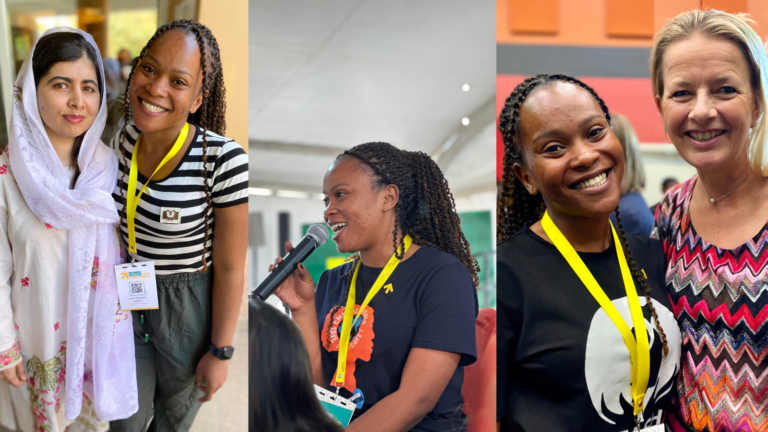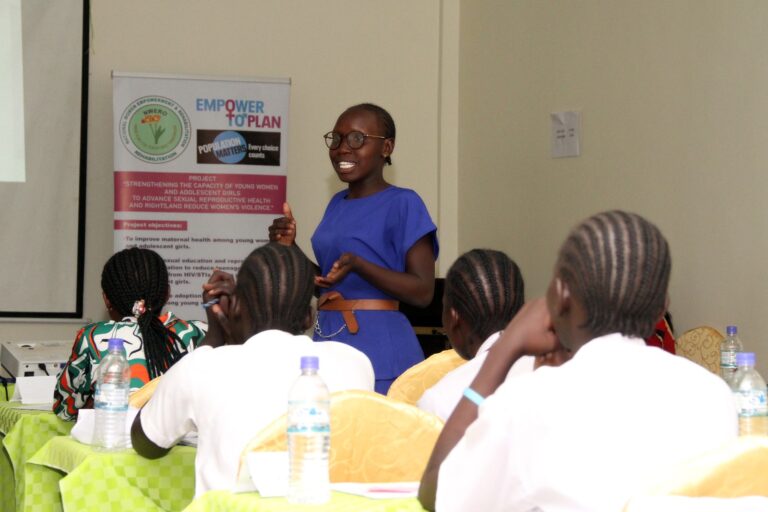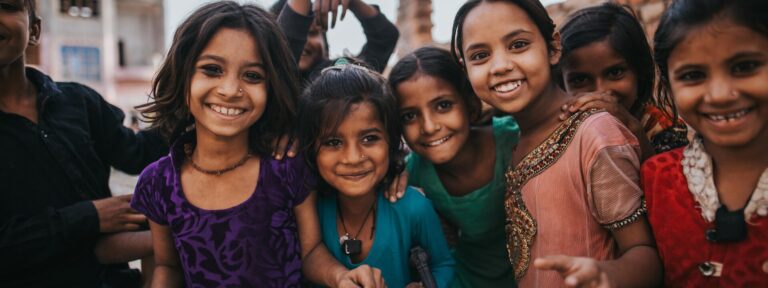
No consent: No choice but to marry their kidnappers
“If a man loves a girl or secretly admires her, he will keep monitoring her movements without her knowledge. One day when she is alone in an isolated place, he will capture her and have sexual intercourse (engagement sex) with her to mark her as his wife.”
An adolescent girl shared that view with researchers during a focus group discussion in Kidepo-Lobunet Village, Karamoja sub-region in Uganda. On World Sexual Health Day, which this year has the theme of consent, our Communications Officer, Florence Blondel looks at this under-reported type of forced marriage, and what can be done.
My husband kidnapped me when I was 17. He started beating me three days later. When I was three months pregnant he beat me so hard that I lost the baby.”
From UNFPA’s “Child marriage in Kyrgyzstan“
In various regions around the globe, spanning Europe, Asia, Africa and the Americas, young girls and women – especially those below the age of 18 – must fight with their prospective spouses, who are frequently older men.
Scratch that, because it is far worse: they are forcefully seized and captured by their intended partners, often with the assistance of other men, including family members. These vulnerable and overpowered girls consistently find themselves on the losing end of this struggle.
Tragically, in many instances, these girls are completely unaware of the individuals taking them. They are abruptly taken away and oftentimes subjected to sexual assault on the same day.
Their future will all too often be without agency or bodily autonomy – a life of repeated rape.
Marriage by capture: Yes, it’s still a thing
This is the practice known as marriage by capture. Associated with this is the term ‘engagement sex’, or being forced into sexual intercourse with the intent to marry, but it is imperative to accurately label it for what it truly is: rape.
This cruel and repugnant form of forced marriage – known also as bride kidnapping, or marriage by abduction – is defined by coercion, manipulation and aggression. It is unmistakably rooted in patriarchal norms. This custom instils widespread fear among young girls. It starkly violates human rights and strips these girls of the freedom to chart their own paths, whether it’s in seeking quality education, meaningful employment, or choosing life partners.
In our days, bride capture was a common practice accompanied by the sexual act. Many of those old women you see around were married as a result of bride capture. This practice is still common especially in village settings. The parents of the boy approach the parents of the girl for negotiations.”
– The role of culture in influencing sexual and reproductive health of pastoral adolescent girls in Karamoja sub-region in Uganda
It is indeed a family affair – but without the victim’s knowledge in many cases and rejections are highly discouraged.
Prevalence
This deeply disturbing tradition, which perpetuates gender inequality, is deeply ingrained in certain cultures and accepted. Hard data is not easy to obtain but the countries where it is currently thought to be most prevalent include Ethiopia, Kazakhstan, Kyrgyzstan (where it is referred to as ‘ala kachuu’ meaning ‘to take and run away’) and South Africa.
A 2017 study by researchers at Duke University found that ‘between 16 and 23 per cent of women in Kyrgyzstan are abducted for marriage, but the rate is much higher among ethnic Kyrgyz where a third of all marriages are due to kidnapping’.
Amnesty International reports that, according to the Kyrgyzstani Ministry of Interior, 64 per cent of police officers in the southern city of Osh consider “bride kidnapping” to be “normal” and 82 per cent of them believe that the abduction is “provoked” by the women themselves.
In Uganda, there are fears that the appalling practice is increasingly happening across the country. In February, a 17-year-old schoolgirl was taken and “that very night, the girl victim was sexually assaulted, by the suspect.”
A few months earlier in August 2022, a 14-year-old girl’s abduction for marriage was widely shared on social media where a group of 8 men grabbed her as her aunt watched. She was whisked off to her expected marital bed where she was“‘confined for almost 4 days“.
The numbers are rising
In a 2022 Internal Labour Organisation (ILO) report, on any given day, roughly 22 million individuals were living in forced marriage in 2021; ‘nearly three in every thousand people in the world’, without their consent.
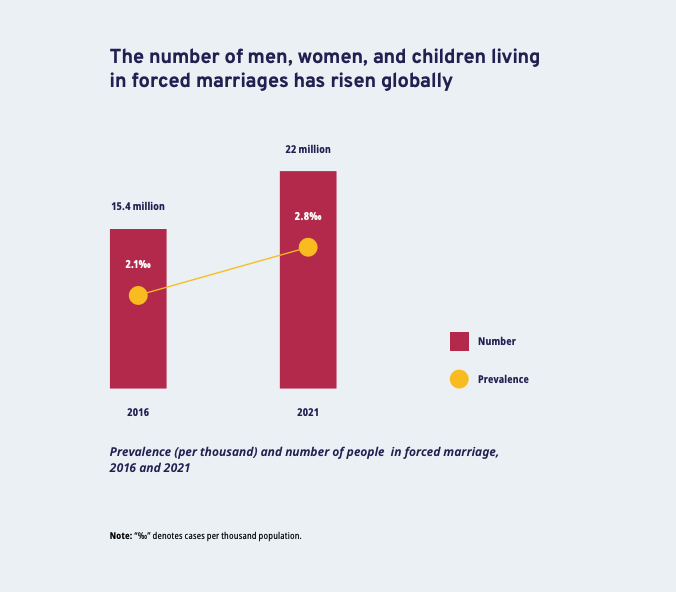
Almost 15 million of them are women and girls. ILO adds that the number keeps rising, with a 6.6 million rise between 2016 and 2021.
The increase in forced marriage is partially explained by compounding crises including the COVID-19 pandemic, conflicts, and climate change, which have increased the risk of forced and child marriage. These crises have led to unprecedented increases in extreme poverty, lower education rates, a rise in distress migration, and significant increases in reports of gender-based violence. All these factors are associated with increased vulnerability to forced marriage.”
While child marriage is not captured in the ILO figures, it “is considered a form of forced marriage, given that one and/or both parties cannot express full, free, and informed consent.” Moreover, close to 700 million women and girls living today were married before the age of 18, and 12 million are married off each year according to UNICEF. Some sadly experience the cruellest form of forced marriage – capture.
There should be no justification
I had to leave the situation or be killed. I know I can never return home because I am considered a dead person for breaking the culture and bringing shame to the families. According to my father, I am dead.”
Female survivor of three forced marriages
The year is 2023, and yet girls and women remain disrespected and abused through what is supposed to be an archaic, long-forgotten custom. A social norm that should never have existed. Young girls are forced to assume responsibilities beyond their years including, dealing with sexually transmitted diseases like HIV/AIDS and becoming unwilling mothers which their bodies are not ready for. According to the Uganda Police Office, it’s:
…a cultural practice that is archaic, unconstitutional and violates the rights of a girl child. The practice puts the girl child at risks of sexual violence on their forced wedding night, draws them into premature motherhood and the pressure to bear children.”
In a paper, Forced Marriage and Birth Outcomes, researchers found that “children born to mothers in kidnap-based marriages have lower birth weight compared with children born to other mothers”.
More often, though, having been kidnapped is so shameful that the victim or her family agrees to marriage rather than risk the stigma of being a ‘used’ woman.”
The above quote is from a Conversation article about bride kidnapping in rural Kyrgyzstan where in 2018 at least two women were killed by their kidnappers when they attempted to resist the marriage.
What to do
Gender inequalities are pervasive and putting us off track for many of the Sustainable Development Goals, including SDG5, which calls for the end of forced marriages.

Ending poverty is vital. While the vile practice of abducting brides has been outlawed almost everywhere, it persists. Some of the reasons it does include poverty.
Girls and women are forced to marry in exchange for payment to their families, the cancellation of debt, or to settle family disputes.”
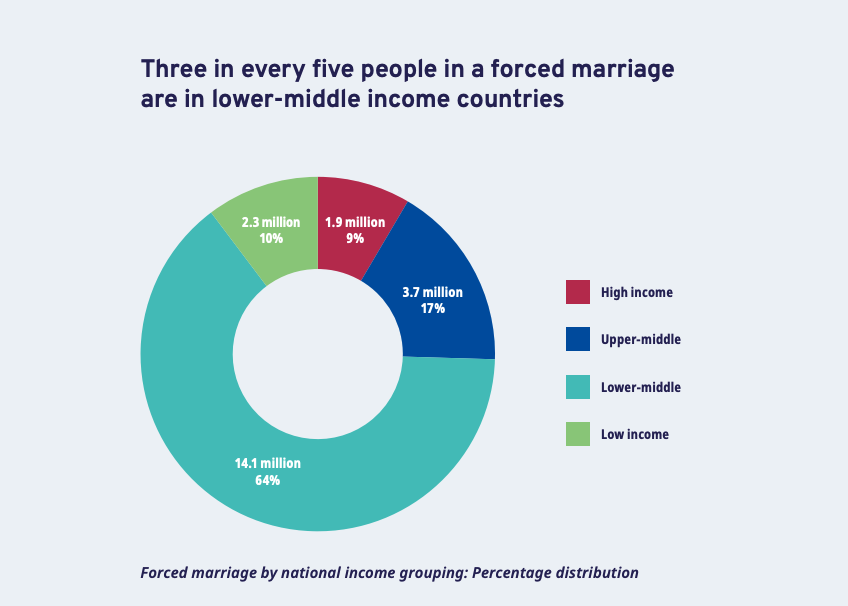
In Kyrgyzstan where about one in five Kyrgyz girls is affected by bride-kidnapping, they are trying out a mobile game to end the custom since enforcing the law is proving ineffectual.
The game involves players in the decision-making process and allows them to see from the outside what this or that decision will lead to. Players find allies and receive legal advice, they begin to develop a plan of salvation [for their friend]. Players can get to know their fears, and they can understand that they are not alone and that fear can be fought.”
Education also matters, particularly comprehensive sexuality education. It certainly saved one 15-year-old girl in the Kaabong district, Uganda from this abhorrent yet widely accepted practice, of wrestling girls straight to marital misery.
If I had not passed through the school, I wouldn’t have survived a forced marriage.”
Joyce Namoe, in World Food Program video
At Population Matters, we back all these solutions and support women’s empowerment projects through our Empower to Plan crowdfunding programme.
Marriage by capture is a pressing issue affecting the lives and dignity of many young girls and women and should be dealt with once and for all.

